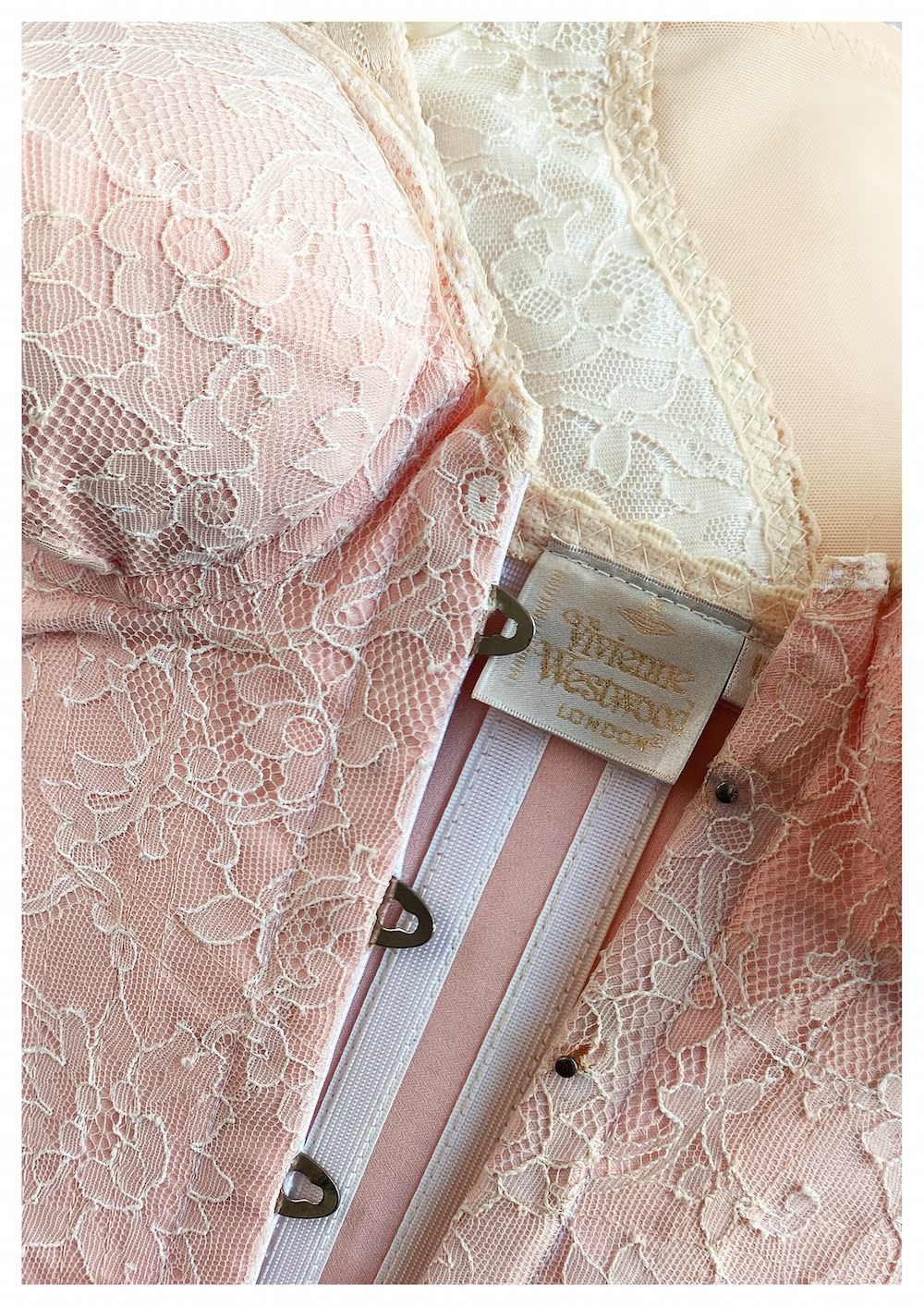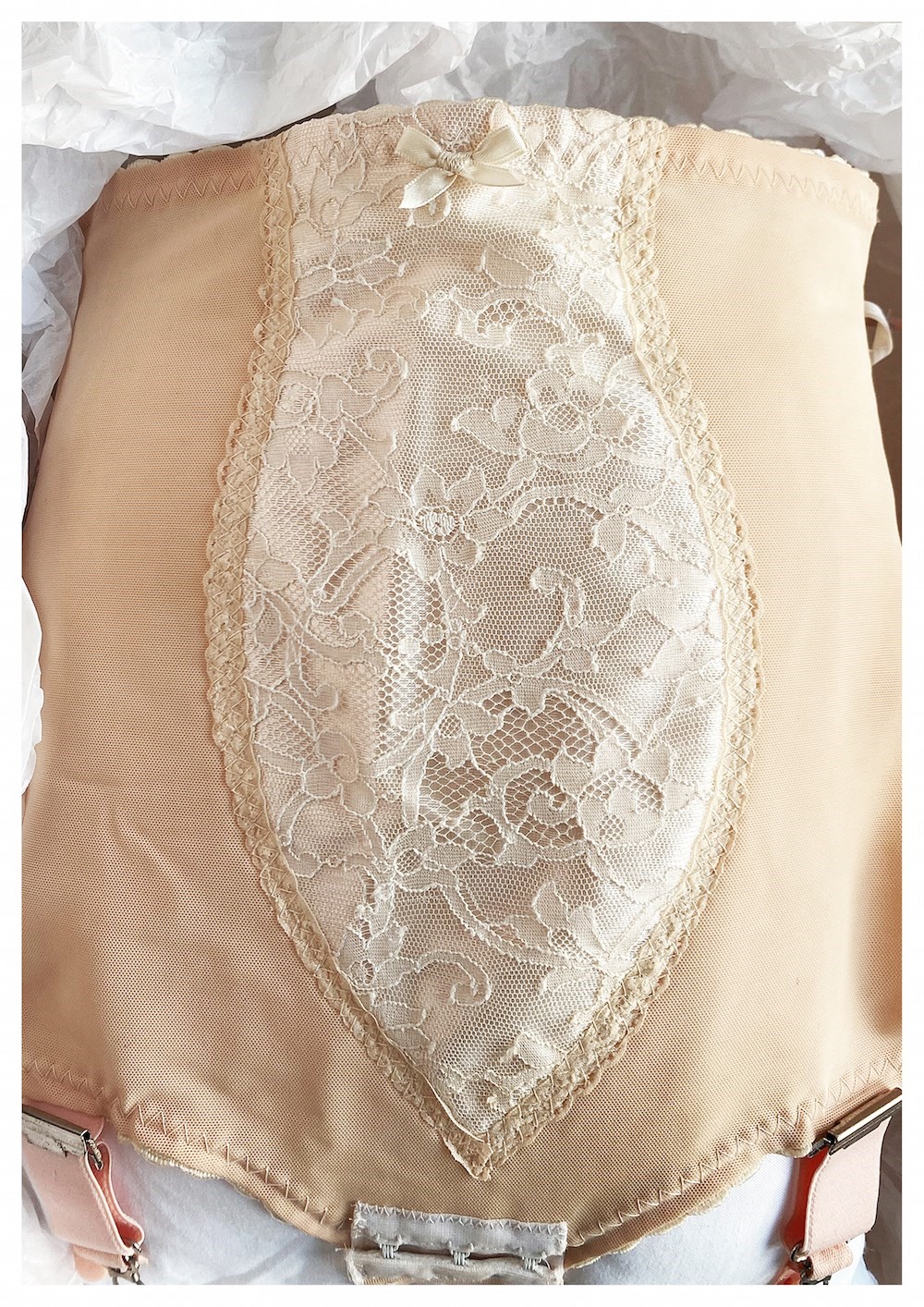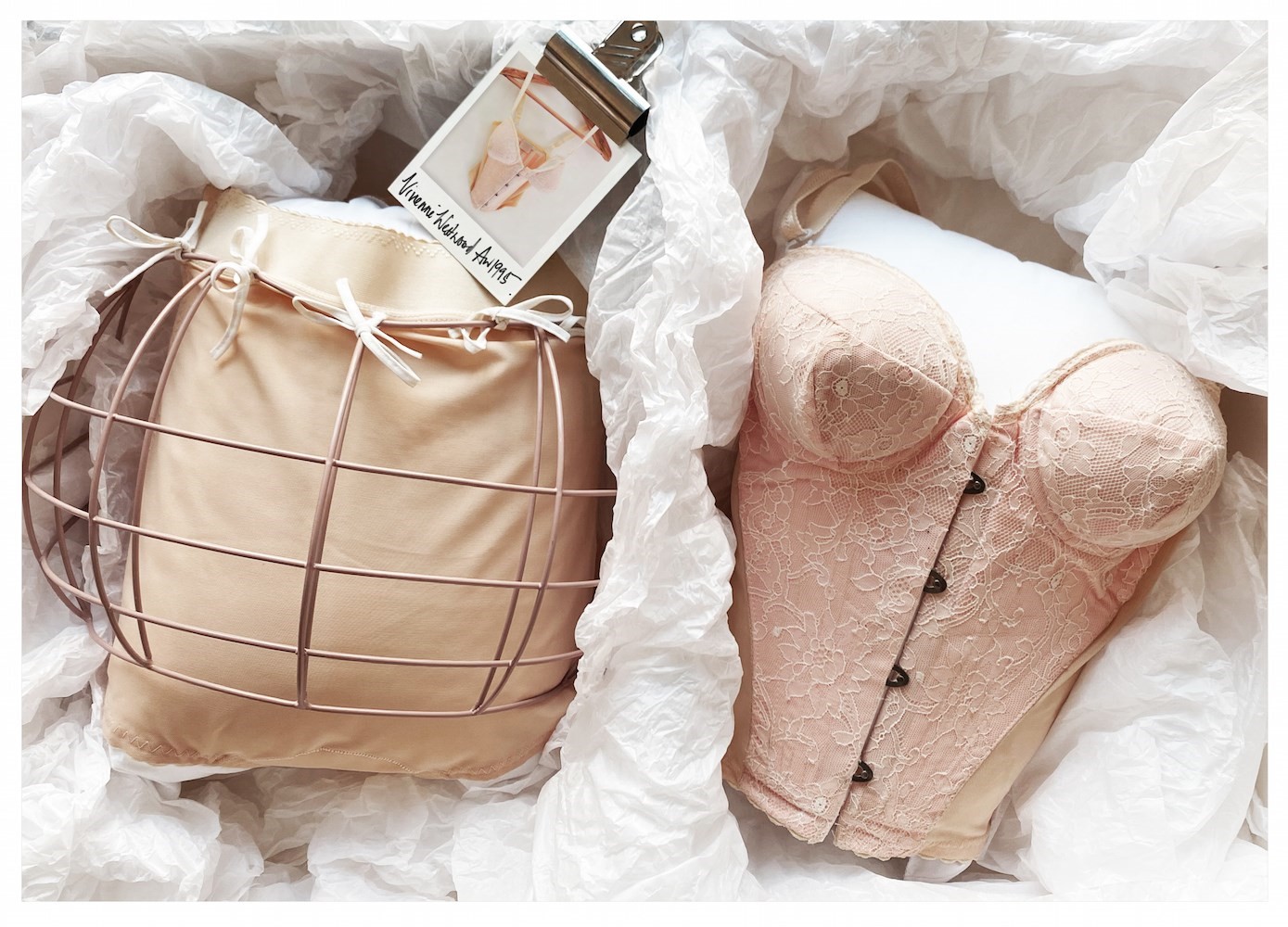Alexander Fury is AnOther Magazine’s fashion features director: he is also an obsessive collector of vintage clothes, with over 3,000 pieces spanning the last quarter of the 20th century, and the start of the 21st. In an exclusive series for AnOther Magazine’s #CultureIsNotCancelled campaign, he literally unpacks his archive, highlighting a selection of exceptional, important and covetable pieces and the stories behind them.
The 17th-century French courtesan and author Ninon de L’Enclos once wrote: “That which is striking and beautiful is not always good, but that which is good is always beautiful.” Vivienne Westwood’s Autumn/Winter 1995 collection was dedicated to L’Enclos, grandly titled Vive la Cocotte. And it was good, although its form of beauty conformed to no traditional standards bar perhaps Sir Francis Bacon’s, “the excellent beauty that hath not some strangeness in the proportion”. Strange is the word for the proportions which were created by these pieces of clothing: a corset with heavily padded breasts and an extraordinary wire ‘cul cage’ that tie with ribbon to a high-waisted girdle. These extreme, arcane pieces are incredibly rare, especially found together in a complete set.
When?
Vive La Cocotte was shown in Paris in March 1995 to a fashion world largely flummoxed by its proposal. Paris was the ideal home for this, given Westwood’s championing of the kind of structure and hand-finishing usually only found in haute couture, and also her appreciation for French culture, particularly the culture of the intellectual salons of the 17th, 18th and 19th centuries, which is often directly alluded to through her clothes. “It is clear that this return to formality in dress is a reaction against the sloppy mediocrity of our age,” read the show programme, as models tripped out in sections titled ‘La Cocotte Stops The Funicular Railway’ or ‘La Cocotte at the Races’. Nothing could have been more different to the prevalent minimalism of the mid-1990s – skinny girls in skinny spaghetti-strapped slip dresses, the least constructed constructs of deconstruction. Westwood – typically unorthodox – chose precisely that moment to propose the diametric opposite, ladies (her word) pumped and padded and dressed in complex, curvilinear tailoring. Notably, Westwood did not cinch the waists of her models – rather, she pushed out their breasts and hips, to give an impression of a tightly-waisted silhouette, an idea that ran counter not only to 1990s fashion, but the entire thrust of slimmed-down 20th-century styles. These padded foundation garments were worn under almost every outfit, from grand evening dresses, to moulded tailoring, to easy knitwear, transforming the silhouette of the wearer. “You don’t always have to wear the foundation, depending on your mood,” Westwood said at the time. “But if your mood’s the right one and you do wear it, well it’s really true that La Cocotte can stop the traffic.”

What?
“A cantilevered, exaggerated, almost aerodynamic woman,” is how Westwood herself described the overarching impression – and these women, with their towering heels, powdered, painted and puckered faces and figures recalibrated by these extraordinary underpinnings, resembled fashion illustrations come to life. Westwood has said this was her favourite collection, because she created a silhouette that had never been achieved before. It’s more extraordinary because that was crafted by elements drawn from the past. It’s a methodology Westwood has often employed, contrast and context as a decontextualising tool – “as beautiful as the chance encounter of a sewing machine and an umbrella on an operating table,” to borrow the surreal phraseology of the Comte de Lautréamont. Only, in Westwood’s hands, the juxtapositions were more likely to be the abbreviated skirts of the 1960s and the swaying crinoline of the 1850s (Mini-Crini, Spring/Summer 1985), or the drapery of ancient Greece and the ‘divorce’ corsets of the 18th century (Britain Must Go Pagan, Spring/Summer 1988).
For Vive La Cocotte, Westwood’s collisions of historical references from a multitude of eras reached new heights, her proportions entirely reset. It was a logical evolution of her experimentations with silhouette – a year before, for Autumn/Winter 1994, she first revived the bustle, proposing outfits with cushions in rear to distend and distort the form. For this collection, the bustle idea was further exaggerated, by steel cage posteriors forged by the father of Westwood’s Austria-born husband and co-designer Andreas Kronthaler, who was a blacksmith in the Tyrol. They were reminiscent of the complex sprung-metal bustles of the 1880s – bustles of various forms oscillated in and out of fashion throughout the latter quarter of the 19th century. But there are also references to the girdles and Wasps of postwar fashion, the heavily padded hourglass shapes of Christian Dior’s 1947 Corolle line, known to history as the ‘New Look’, and the resultant bullet-bras of the sweater girls of the 1950s, which Westwood remembered from her youth and revived alongside McLaren at Let It Rock. These underclothes are executed in the fleshy lace and nylon of that postwar underwear, combining the aesthetic language of seduction and correction, with archaic details like metal busk fastenings and suspender belts.

Why?
The ‘why’ for collecting these pieces is twofold: first of all, it’s an incredible and important piece of fashion history. All Westwood’s work is compelling and has contributed to the shape of fashion today – although her mid-1990s collections, created with Kronthaler, have often been overlooked in favour of her radical early 1980s pieces. But her interest in construction, fit and tailoring triggered a general resurgence of attention on couture past – while Westwood’s instincts at this point ran counter to mainstream fashion, fashion wound up following her. Within a few years, the dress-up glamour of Westwood’s show was no longer out-of-place (although she’d already moved on to pastures new).
It’s also personally important because I remember being blown away by seeing this show as a teenager – by these exaggerated, unreal women wearing clothes that echoed a fantasised past. I found these pieces in Japan, where Westwood has always had a contingent of devoted fans purchasing extraordinary showpieces such as these (this collection was so exaggerated and specific, an entire toned-down selling collection was created also, for commercial purposes). Alongside the cinched and padded ballgowns of Christian Dior and 19th-century couture of Charles Frederick Worth – rich records of the extremes of fashion past, from which they draw so much inspiration – these pieces belong in a museum. Which is where most of the others have ended up.
